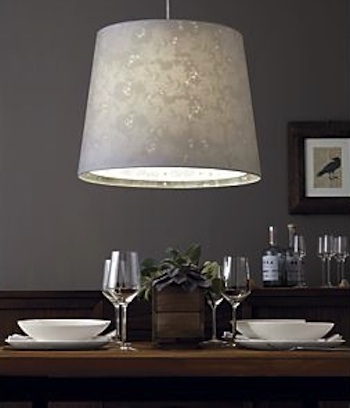SEOUL, South Korea (AP) ? Ex-NBA star Dennis Rodman hung out Thursday with North Korea's Kim Jong Un on the third day of his improbable journey with VICE to Pyongyang, watching the Harlem Globetrotters with the leader and later dining on sushi and drinking with him at his palace.
"You have a friend for life," Rodman told Kim before a crowd of thousands at a gymnasium where they sat side by side, chatting as they watched players from North Korea and the U.S. play, Alex Detrick, a spokesman for the New York-based VICE media company, told The Associated Press.
Rodman arrived in Pyongyang on Monday with three members of the professional Harlem Globetrotters basketball team, VICE correspondent Ryan Duffy and a production crew to shoot an episode on North Korea for a new weekly HBO series.
The unlikely encounter makes Rodman the most high-profile American to meet Kim since the young North Korean leader took power in December 2011, and takes place against a backdrop of tension between Washington and Pyongyang. North Korea conducted an underground nuclear test just two weeks ago, making clear the provocative act was a warning to the United States to drop what it considers a "hostile" policy toward the North.
Kim, a diehard basketball fan, told the former Chicago Bulls star he hoped the visit would break the ice between the United States and North Korea, VICE founder Shane Smith said.
Dressed in a blue Mao suit, Kim laughed and slapped his hands on the table before him during the game as he sat nearly knee to knee with Rodman. Rodman, the man who once turned up in a wedding dress to promote his autobiography, wore a dark suit and dark sunglasses, but still had on his nose rings and other piercings. A can of Coca-Cola sat on the table before him in photos shared with AP by VICE.
"The crowd was really engaged, laughed at all of the Globetrotters antics, and actually got super loud towards the end as the score got close," said Duffy, who suited up for the game in a blue uniform emblazoned with "United States of America. "Most fun I've had in a while."
Kim and Rodman chatted in English, but Kim primarily spoke in Korean through a translator, Smith said after speaking to the VICE crew in Pyongyang.
"They bonded during the game," Smith said by telephone from New York after speaking to the crew. "They were both enjoying the crazy shots, and the Harlem Globetrotters were putting on quite a show."
The surprise visit by the flamboyant Hall of Famer known as "The Worm" makes him an unlikely ambassador at a time when North Koreans are girding for battle with the U.S. Just last week, Kim guided frontline troops in military exercises.
North Korea and the U.S. fought on opposite sides of the three-year Korean War, which ended in a truce in 1953. The foes never signed a peace treaty, and do not have diplomatic relations.
Thursday's game ended in a 110-110 draw, with two Americans playing on each team alongside North Koreans, Detrick said. The Xinhua News Agency first reported on the game, citing witnesses who attended.
After the game, Rodman addressed Kim in a speech before a crowd of tens of thousands of North Koreans, telling him, "You have a friend for life," Detrick said.
At a lavish dinner at Kim's palace, the leader plied the group with food and drinks as the group made round after round of toasts.
"Dinner was an epic feast. Felt like about 10 courses in total," Duffy said in an email to AP. "I'd say the winners were the smoked turkey and sushi, though we had the Pyongyang cold noodles earlier in the trip and that's been the runaway favorite so far."
Duffy said he invited Kim to visit the United States, a proposal met with hearty laughter from the North Korean leader.
"Um ... so Kim Jong Un just got the (hash)VICEonHBO crew wasted ... no really, that happened," VICE producer Jason Mojica wrote on Twitter.
Rodman's trip is the second attention-grabbing U.S. visit this year to North Korea. Google's executive chairman, Eric Schmidt, made a four-day trip in January to Pyongyang, but did not meet the North Korean leader.
Extending an invitation to a man known as much for his piercings, tattoos and bad behavior as for his basketball may seem inexplicable. But Kim is known to love the NBA, and has promoted sports since becoming leader.
"We knew that he's a big lover of basketball, especially the Bulls, and it was our intention going in that we would have a good-will mission of something that's fun," Smith said. "A lot of times, things just are serious and everybody's so concerned with geopolitics that we forget just to be human beings."
Rodman's agent, Darren Prince, said Rodman wasn't concerned about criticism about making a visit to an enemy nation.
"Dennis called me last night and said it's been a great experience and he made this trip out of the love of the USA ," he said. "It's all about peace and love."
___
Associated Press NBA writer Brian Mahoney contributed to this report from New York. Follow AP's Korea bureau chief Jean Lee at twitter.com/newsjean.
Source: http://news.yahoo.com/rodman-tells-kim-jong-un-friend-life-141655557--spt.html
martina navratilova high school shooting ohio school shooting sean young arrested matt kenseth bridge to nowhere primary results
 The World Wide Web Consortium (W3C), an international community that develops web standards, has announced the launch of the new ?Automotive and Web Platform Business Group? which will create web technology specifications for the automotive industry starting with a Vehicle Data API Specification.
The World Wide Web Consortium (W3C), an international community that develops web standards, has announced the launch of the new ?Automotive and Web Platform Business Group? which will create web technology specifications for the automotive industry starting with a Vehicle Data API Specification.

 , while fabric-covered rectangular or drum-shaped fixtures are great transitional lighting elements that can work with most interior looks.
, while fabric-covered rectangular or drum-shaped fixtures are great transitional lighting elements that can work with most interior looks. There are two approaches to positioning pendants properly over a dining table. One is to hang the bottom rim of the pendant 60 to 66 inches from the floor. The other is to suspend it about 30 inches above the table surface. Either approach will yield the same result by providing ample illumination on the table surface while shielding the glare of the light sources from the eyes of diners around the table.
There are two approaches to positioning pendants properly over a dining table. One is to hang the bottom rim of the pendant 60 to 66 inches from the floor. The other is to suspend it about 30 inches above the table surface. Either approach will yield the same result by providing ample illumination on the table surface while shielding the glare of the light sources from the eyes of diners around the table.
 Hey there! I?m originally from Long Island, New York, but I?m currently upstate in beautiful Ithaca finishing up my senior year at Cornell University.
Hey there! I?m originally from Long Island, New York, but I?m currently upstate in beautiful Ithaca finishing up my senior year at Cornell University. I?m currently the outgoing editor for The Sun?s weekly science section. During my year as head of the science desk, the section has covered cool on-campus research like an engineering team?s work with temporal cloaking, or making moments in time seem invisible, as well as the once-in-a-decade blooming of a titan arum, also known as the rare ?corpse plant.? And yes, it did smell horrendous ? a mix of cabbage gone bad and rotting fish.
I?m currently the outgoing editor for The Sun?s weekly science section. During my year as head of the science desk, the section has covered cool on-campus research like an engineering team?s work with temporal cloaking, or making moments in time seem invisible, as well as the once-in-a-decade blooming of a titan arum, also known as the rare ?corpse plant.? And yes, it did smell horrendous ? a mix of cabbage gone bad and rotting fish. Following my summer at Science, I got to attend two major science conferences as a student journalism travel grant recipient. The first was in New Orleans for Neuroscience 2012 where I shadowed Science News neuroscience writer Laura Sanders. Then more recently I was at the AAAS Conference in Boston were I met nine other very talented young science writers from across the country and got to cover a symposium on whale evolution and wrote a piece on the blue whale?s impressive aquatic acrobatics.
Following my summer at Science, I got to attend two major science conferences as a student journalism travel grant recipient. The first was in New Orleans for Neuroscience 2012 where I shadowed Science News neuroscience writer Laura Sanders. Then more recently I was at the AAAS Conference in Boston were I met nine other very talented young science writers from across the country and got to cover a symposium on whale evolution and wrote a piece on the blue whale?s impressive aquatic acrobatics. Right now Facebook is my main social media platform for broadcasting science news. Throughout the day I tend to post little science ?pick-me ups? to give my friends something interesting to read and ponder while they?re escaping their studies browsing Facebook. I?ve also taken to Twitter (@SciFleur ? a pun on my last name) and love the rush of live-tweeting science conferences.
Right now Facebook is my main social media platform for broadcasting science news. Throughout the day I tend to post little science ?pick-me ups? to give my friends something interesting to read and ponder while they?re escaping their studies browsing Facebook. I?ve also taken to Twitter (@SciFleur ? a pun on my last name) and love the rush of live-tweeting science conferences. You can then use the right and left buttons on the remote to move forward and back one chapter at a time. If instead you're using the Remote app on your iOS device, swipe down on the screen first to pull up the chapter guides.
You can then use the right and left buttons on the remote to move forward and back one chapter at a time. If instead you're using the Remote app on your iOS device, swipe down on the screen first to pull up the chapter guides. What? That's a swipe down, people.
What? That's a swipe down, people. On the Remote app, there's a special button to access this, too:
On the Remote app, there's a special button to access this, too: Handy! I find this especially useful to quickly turn on closed captioning if I'm trying to keep the volume down late at night or if I'm having trouble understanding an actor through his accent.?
Handy! I find this especially useful to quickly turn on closed captioning if I'm trying to keep the volume down late at night or if I'm having trouble understanding an actor through his accent.?

